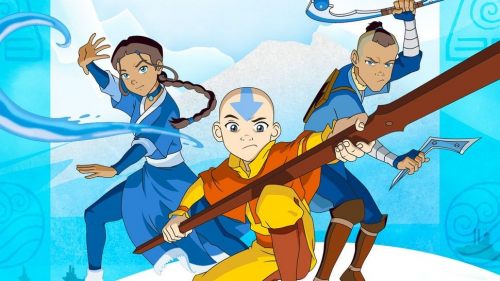AVATAR At 10: Marvelously Made And Thoroughly Frustrating
Avatar, James Cameron’s most recent film as a director, is ten years old today. And ten years on, it remains a rich subject for discussion. There’s the role that it played in advancing the use of digital imagery and 3D in blockbuster filmmaking and its near-decade-long reign as the highest grossing movie of all time. And those are just the most immediate topics of conversation. As for the picture itself, it’s a James Cameron film. He’s a fascinating filmmaker, and his films are always worth exploring. Revisiting it for the first time since its original theatrical release, I personally find that its craft is impressive, its narrative and thematic goals are admirable, and its stumbles are exasperating.
Avatar’s greatest strengths as a movie are the world it builds and the craft with which that world is built. With the moon of Pandora, Cameron and his creative collaborators created not just a visually striking alien world, but one with a genuine ecosystem. Every creature on Pandora, from the sapient, humanoid Na’vi to the gargantuan flying apex predator Toruk, is connected to each other. For the Na’vi, who can form biological links with Pandora’s fauna and each other, the connection is outright literal. Cameron seeds the breadth and depth of Pandora’s life cycle throughout Avatar – in the culture and rituals the Na’vi have built around it and in more spontaneous moments.
By emphasizing Pandora’s ecosystem, Cameron is in turn able to develop one of the most interesting science fiction concepts in the film. Eywa, the goddess worshiped by the Na’vi, exists within the biological data stream that connects the Pandoran ecosystem. When she intervenes during the final battle, she does so through that very network – directing Pandora’s wildlife to attack the invading human army. The network’s constant presence throughout the film both lays the groundwork for Eywa’s actions and ups their surprise factor. It’s a radical departure from the ecosystem’s established behavior that is possible precisely because of that very ecosystem.
Cameron and company apply the same level of care they bring to building Pandora to Avatar’s cinematic construction. As BMD’s own Andrew Todd put it in his Say Something Nice entry on the film, “Every shot in Avatar has a purpose…” The audience is always aware of what is going on why and where, even during the gargantuan final battle. Cameron shifts from player to player, protagonist to antagonist, land to sky. All while working with a substantial amount of visual effects in broad daylight. It’s a set piece perfect for bringing structural and visual seams to light. There are few to none. And, as a piece of action choreography, Avatar’s final battle is darned good. It’s fought on multiple fronts with a wide variety of players and personalities, gradually winnowing down to a fist/knife/bow and arrow fight between Sam Worthington’s Jake Sully and Zoe Saldana’s Neytiri on one side and Stephen Lang’s Colonel Quaritch on the other. The stakes are both existential and personal, and their importance shifts with the tide of battle. Ultimately, the personal conflict wraps the action up after a climactic explosion ends the existential threat to the Na’vi. It’s very, very fine filmmaking.
As well-made as so much of Avatar is, its failings are all the more apparent and all the more disappointing. Its dialogue is gratingly tin-eared. Sully and the Na’vi draw heavily (but not exclusively) on the acrid, tired clichés of white saviors and noble savages. And for my money most critically, the dissonance between Avatar’s honorable thematic ambitions and a few of its key storytelling decisions undercut the points it wants to make and leave the picture to land on a sour note.
Avatar is a passionately environmentalist picture, one that calls on humanity to recognize our responsibility for ongoing environmental devastation and the climate crisis. It’s also sharply critical of colonialism and imperialism. These are terrific things to advocate for, and for that matter, fertile ground for terrific science fiction. The Na’vi go to war not to conquer, but to defend the environment the sinister Resources Development Administration and their private army. War is not glorious – the Na’vi/human conflict is, to quote Jake, a “time of great sorrow.” Humanity cannot stave off extinction by ravaging another world the way they did Earth. Indeed, Avatar closes with humanity’s attempt to take Pandora decisively defeated, with all but those who came to learn rather than conquer kicked off the moon. It is a bold, daring ending.
Unfortunately, the specifics of Avatar’s story and the way its climax (impeccably made though it is) plays out severely mucks up its themes. The Na’vi are not merely dedicated to living in harmony with nature in a story where humanity has all but killed Earth. They are morally superior to humanity in every way. They are more in tune with each other and unburdened by materialistic desires. Individual Na’vi, like Laz Alonso’s initially hostile warrior Tsu’tey, may be jerkish – but compared to humanity even the surliest Na’vi is a shining beacon of good. Jake does not turn on the RDA just because he recognizes that their actions are abominable, he goes so far as to renounce his humanity altogether – the film closes with his discarding his human body in favor of inhabiting his human/Na’vi hybrid body (the titular Avatar) full time. His narration even describes the RDA’s banishment as “aliens” going back to “their dying world.” The majority of humanity in Avatar is venal and corrupt.
The sharp dichotomy between Na’vi and human is made particularly apparent during the final battle. When a Na’vi (or one of their few human allies) dies, it is sobering and somber. Tsu’tey’s demise in particular is so aestheticized that his frankly horrible death is almost beautiful. When humans die, it is not merely cool and triumphant but downright brutal. Witness the painful fates of the gunship goons in this sequence, for instance. True, goons and mooks in action sequences are meant to be defeated in cool ways, but the space between how Cameron treats Na’vi deaths and human deaths is noteworthy.
Cameron intertwines Avatar’s call to recognize humanity’s responsibility for the damage our species does to the environment and the horrifying consequences of imperialism closely with the idealization of the Na’vi. In conjunction with Avatar’s depiction of humanity as largely morally bankrupt and worthy of vicious death, Cameron’s points degrade into mush. “We need to repair the damage we are doing to our world and take responsibility for our moral failings” mutates into “humanity’s looming extinction is just desserts not only for our moral failings but for slighting the magnificent Na’vi.” It’s sour and disappointing, given the worthiness of the points it wants to make.
Given this substantial storytelling issue, Avatar is ultimately a film I find much to respect in and much to be disappointed by. I admire its craft and applaud the work it does to build and explore Pandora. I’m frustrated by what I find to be its significant storytelling failures. I’ll be very curious to see what I think of the long-in-the-works Avatar 2 once it is released.


